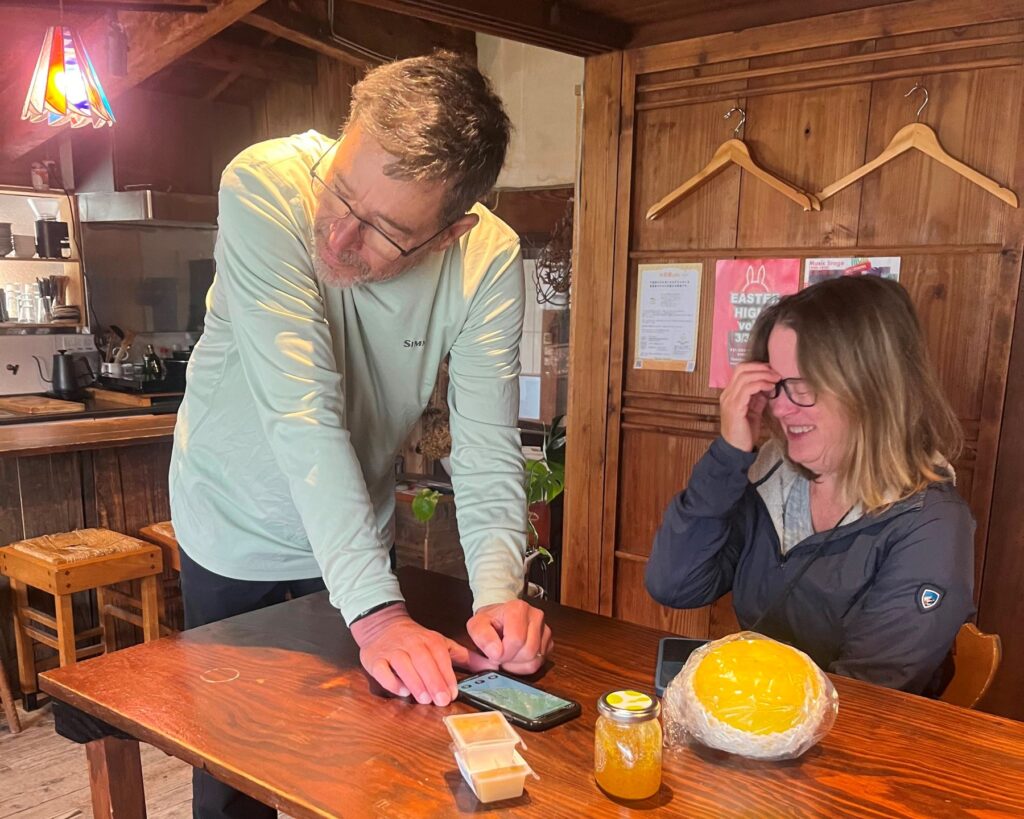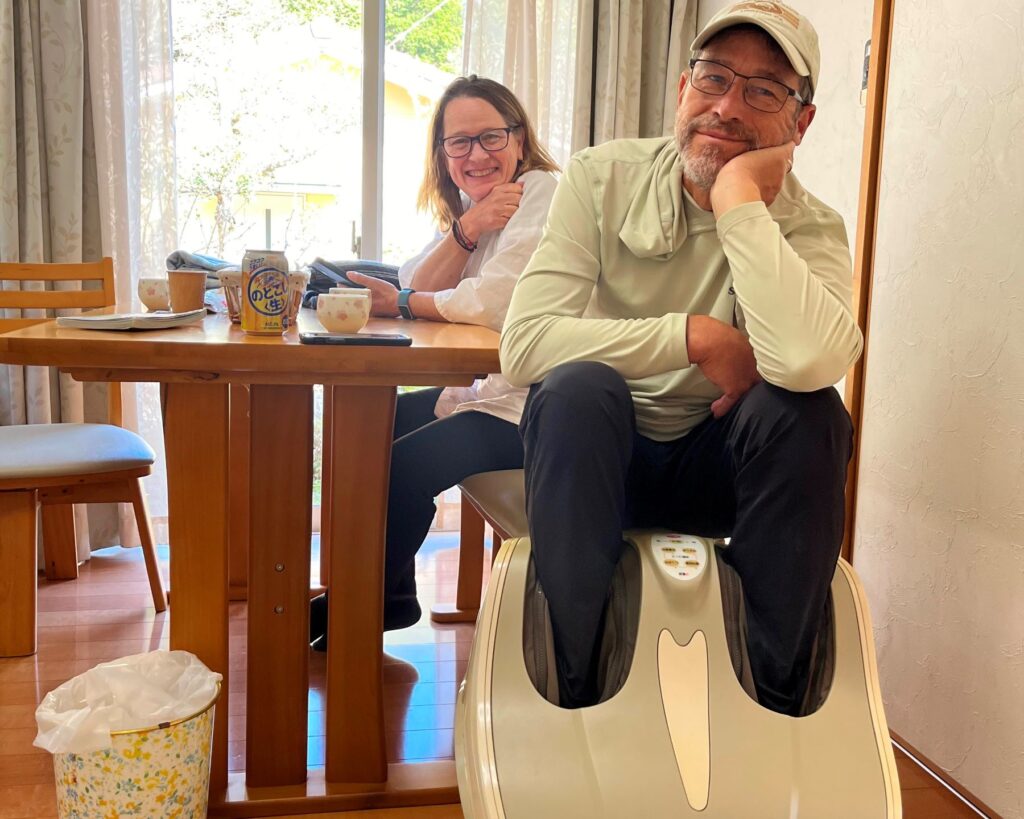Two of my friends and I spent 48 days in Shikoku, Japan, walking the pilgrimage trail known as the Shikoku Henro. It was an unforgettable experience, visiting all 88 magnificent temples and meeting kind, caring local people. Along the way, we also encountered many interesting pilgrims from around the world, all on journeys lasting from 30 to 60 days. Our daily rituals as a Shikoku Henro became an integral part of this once-in-a-lifetime experience that I will cherish forever.
Planning Your Shikoku Pilgrimage

When my friends and I decided to do the pilgrimage together, we did a fair amount of planning. We downloaded the Henro app which provided routes and recommended places to stay along the way. It was incredibly useful, and I highly suggest using this free app. My friends also bought a Henro Helper book, which was helpful for planning.
On our first day in Shikoku, we visited the first six temples close together, walking a total of 12 miles. At the first temple, you can buy special items like the Shikoku robe, walking sticks, and a stamp book called “goshuino” to record each shrine and temple visit. While many pilgrims choose the stamp book to track their journey, my friends and I decided not to. If you miss them at the first temple, you can find them at other places along the way.
We booked a lodging with meals, called Shukubo, at temple 6 in advance, which I highly recommend for its great accommodations and meals. It’s best to book early, especially during the busy spring and fall seasons.
None of us bought the traditional Henro hat. I tried one at first but found it uncomfortable because it kept hitting my backpack, making it difficult to keep my head up. So, I returned it. However, many Henros do buy the hat. It’s a symbol of being a Henro and provides sun protection. Also, I recommend getting the Henro robe called “hakui“. Alternatively, you can opt for the sleeveless version called “Oizuru” for your pilgrimage.
Daily Rituals on the Shikoku Pilgrimage
Our daily rituals on the Shikoku pilgrimage were structured and essential for our journey:
1. Morning Preparation

Each day on the Shikoku pilgrimage started at 6 am. We got up, packed our bags with everything we needed for the day, and had breakfast. Sometimes we ate food we brought with us.
Other times, we enjoyed breakfast provided by the friendly homestays where we stayed. This routine helped us start our day right. It prepared us for the journey ahead, ensuring we were ready for whatever adventures awaited us along the pilgrimage trail in Shikoku.
2. Starting the Day

We usually started walking between 7 to 8 am. This depended on how far we planned to walk that day, a decision we made the night before. Our goal was to cover about 15 to 18 miles each day to finish in 48 days.
3. During the Day

During our daily walks of about 15 to 18 miles, we relied on our Henro Helper app for directions. The app also showed us where convenience stores and restrooms were along the way. Convenience stores are abundant in Japan and easy to find, except on a few occasions when they weren’t along our route.
We often stopped at these stores to recharge our phones. We also grabbed a simple lunch, like rice triangles or chips, and sometimes hashbrowns for my friends. Often, we’d also seek out coffee shops to take breaks. It was a chance to interact with locals, which became a cherished part of our daily rituals in Shikoku.
4. Arrival and Accommodation

By late afternoon, usually between 4 to 5 pm, we arrived at our booked homestay, Henro house, or hostel. After checking in and freshening up with a shower or bath, we typically had dinner around 6 pm. We either enjoyed meals provided by our accommodation or used Google Maps to find nearby restaurants. This routine gave us a chance to relax and refuel after a long day of walking on the Shikoku pilgrimage trail.
Some Henros choose to camp at local campgrounds, but for my friends and me, it was preferable to stay at places where we could have warm showers and meals.
5. Evening Planning

After dinner, we dedicated time to planning our route for the next day and arranging our accommodations. It was crucial to book places to stay 3 to 4 days in advance because they filled up quickly. Most homestays could only accommodate 4 to 6 people at a time. Shukubos, which can accommodate more, also tended to fill up fast, often with tour groups staying at the temples.
Since many locals didn’t speak English, we relied on Google Translate to communicate effectively during these bookings. This preparation ensured our pilgrimage continued smoothly without worrying about where to stay each night. We stayed at different places almost every night, except for a few times when we stayed longer and visited multiple temples from one location.
6. Rest and Recovery

We aimed to go to bed between 9 to 10 pm every night to ensure we got a good 8 to 9 hours of sleep. This rest was crucial for us to feel refreshed and ready for the next day’s walking journey on the Shikoku pilgrimage trail. Believe me, especially for the first week, your feet will be throbbing.
My Shikoku Pilgrimage: Daily Rituals and Reflections

My daily rituals during the Shikoku pilgrimage were essential to my journey. From early morning preparations to exploring temples and interacting with locals, each day was filled with new experiences and challenges. Whether it was planning routes, enjoying local cuisine, or finding peaceful moments in coffee shops, every aspect contributed to a memorable pilgrimage. These rituals not only helped us navigate the trail but also enriched our understanding of Shikoku’s culture and spirituality.
Check out my previous post about my experience as a Shikoku Henro pilgrim!














